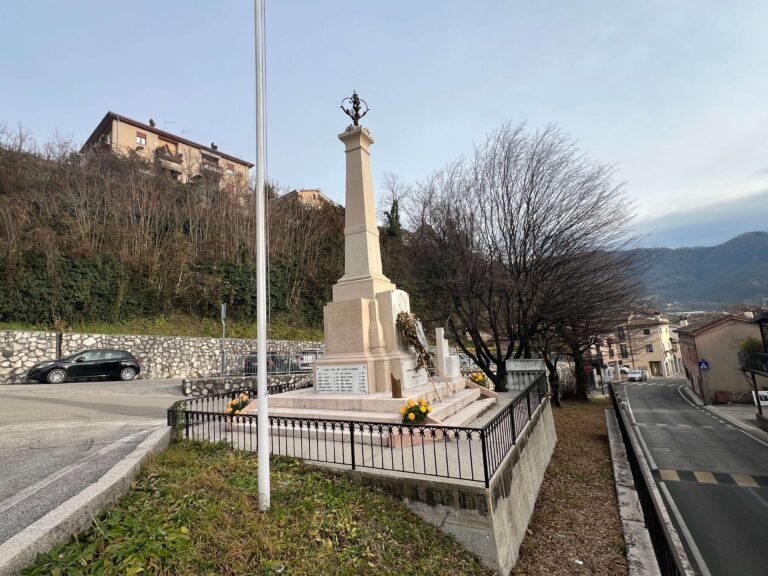ARTISTS’ ROADS
LE VIE DEGLI ARTISTI
watch the videos at the bottom of the page!
SEGUSINO
Segusino: After the War, Memory
The territory of Segusino lies in a valley of Mount Cesen, stretching from 1,400 metres above sea level down to the River Piave.
A descent of 1,200 metres.
Segusino belongs to the Diocese of Padua, a city which, in the Middle Ages, used these mountains for sheep grazing.
It was a poor land, and in the nineteenth century saw waves of mass emigration, especially to Mexico.
Then came the First World War.
This marked the end of Austria-Hungary.
After Caporetto, the men crossed the Piave; the population was evacuated to Fregona, and those who remained endured abuse from the invaders and even shelling by the Italian army.
When the war was over, the time came to rebuild: not only villages, but also the memory of the conflict.
It was necessary to mend the wounds of civil society, to come to terms with mourning, grief that was both private and collective.
The many memorials scattered across Italy are part of this long process, which followed a series of specific phases.
The last of these was the most spectacular. Between 1927 and 1939, a national commission built vast ossuaries near the battlefields.
Think of Redipuglia or the ones closer to home, at Mount Grappa and Nervesa.
These are solemn places, grandiose in scale, monumental interventions in the landscape, land art projects, in effect, that channel deep emotion and the nationalist ideals of Fascism.
The previous phase had begun in 1923: every provincial capital was required to erect a war memorial.
But in the places most marked by the war, the first monuments had already appeared in 1919.
Plaques bearing names, stone markers, weapons, monuments great and small, drawing on sacred imagery, military iconography, or classical forms.
It is within this context that the Segusino memorial was inaugurated on 20 November 1921. Its most striking feature is an obelisk.
An object rooted in ancient Egypt, yet deeply embedded in our tradition. It links earth and sky, a sign of immortality, which is precisely what is invoked for those who fell in war.
The lantern at the top holds aloft the light, the enduring value of their sacrifice.
The names are carved into the plaque, accompanied by a long commemorative inscription, and a passage from the army bulletin of 29 October, written during the Battle of Vittorio Veneto, which recalls the liberation of Segusino. Later, the names of those who died in the Second World War were added.
At the base of the obelisk is a relief carved in white marble.
The artist speaks to us of war through the tenderness of three women. At the centre stands the figure of the Nation, supporting the Mother and the Widow, both of whom bow their heads in acceptance of the sacrifice.
The work is by the Veronese sculptor Giulio Nordio, a veteran of the war, wounded in action. He created around ten such monuments across the Veneto.
A similar image appears on the monument in Pesina, near Caprino Veronese.
These are not depictions of real mothers of soldiers. They have been transformed into elegant classical figures, strong enough to bear their pain.
Their faces and drapery evoke the perfection of ancient Greek art.
But within the shape of the relief, we can discern the outline of a cross and in the folds of their robes, the flowing waters of the Piave. The river sacred to the Nation.
MORE EXPERIENCES!
Le memorie della Grande Guerra:
- Conegliano, il Monumento ai Caduti
- Moriago della Battaglia, l’Isola dei Morti
- Sernaglia della Battaglia, il Monumento ai Caduti
- Vittorio Veneto, il Museo della Battaglia
MULTIMEDIAL MAP: “ARTISTS’ ROADS – LE VIE DEGLI ARTISTI- EN”!

